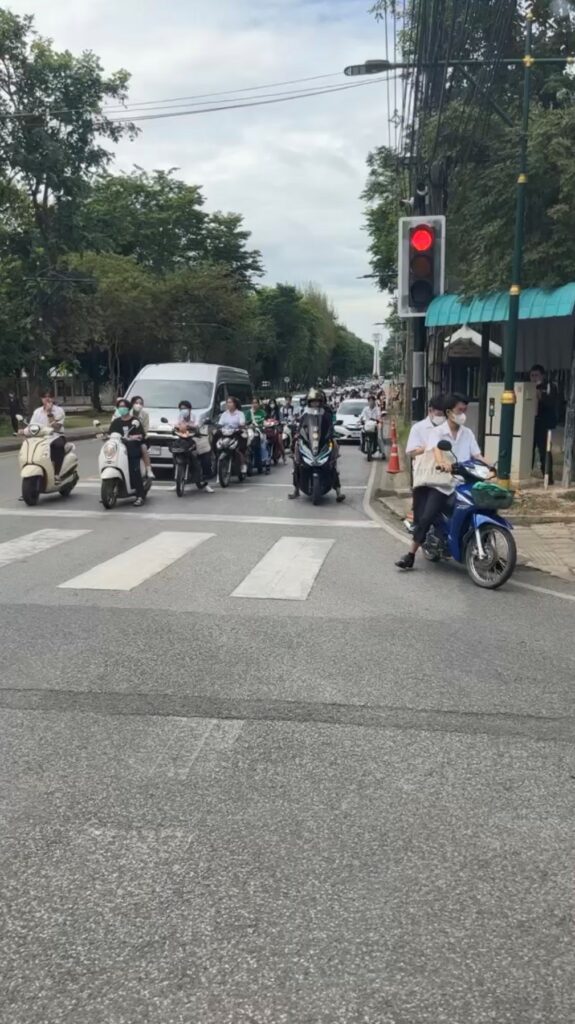In addition to cars, trucks, vans, and buses like we are used to here in the United States, motorcycles are very common on the road in Thailand. Motorcycles I have seen in Thailand include scooters, Harleys, dirt bikes, and racing bikes. Many Thai people use scooters for regular transportation over shorter distances. As a result, within cities and population centers, scooters are prevalent on the road. After class at Chiang-Mai University while we were leaving campus, the volume of scooters of students leaving campus at the end of the day was so high that at some points the road was barely visible. Scooters fill the gaps between cars and on the shoulders of the road, resulting in congestion the likes of which I have not seen anywhere in the United States.

I got the opportunity to ride on a scooter while in Thailand, and it is an experience that is hard to encapsulate in words. Riding on a highly maneuverable vehicle that is as thin as your body while being passed by cars, motorcycles, and other vehicles on the road is exhilarating. The feeling of the bumps in the road and the wind and the sound of vehicles is visceral. Since the speed limit on Thai roads is much lower than here in the United States, the anemic 125cc scooter still felt relatively fast. Having the road pass by inches below your feet and not having a windshield or windows mean that it felt more like riding a go kart than a sedan. It made me realize that being inside an enclosed environment, like that of a car, results in the loss of a lot of sensory information. In America, this is usually good, since roadways are seldom pleasant environments for people to be in. But in Thailand, there are many pedestrians, roadside stalls and vendors, and other activities going on right beside the road. Being truly connected to the environment around me gave me a much greater appreciation for both my senses and motorcycles in general.
